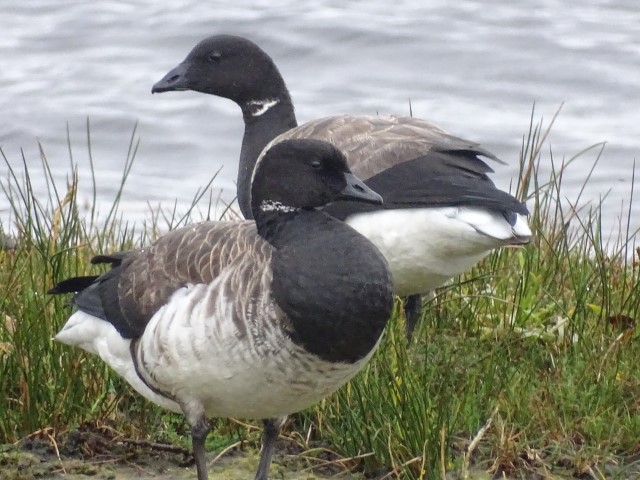Brent Goose
Reports

Considered by some to be the most attractive of our wintering geese, the Brent Goose is small, not much bigger than the familiar Mallard. There are three recognised sub-species of this goose and all breed in the high Arctic and are circumpolar. Brent Geese nest on the boggy Arctic tundra, where the severe climate allows them only about two months of good weather in which to raise a family. By September, they are leaving their breeding grounds, and heading for their wintering areas where they spend the winter feeding on eelgrass in estuaries and on crops in adjoining fields.
Two of these subspecies winter in considerable numbers on the British Isles. The Dark-bellied Brent Geese breed in northern Russia and spend the winter in southern and eastern England while the Pale-bellied Brent Geese breed mostly in Canada and Greenland and spend the winter mostly in Ireland. It is estimated that around 90,000 Dark-bellied Brent Geese travel to Britain each autumn from their nesting grounds in Siberia, wintering in the sheltered estuaries and coastal marshes on the east and south coasts of England. It is also estimated that around 30,000 Pale-bellied Brent Geese arrive in Strangford Lough in Northern Ireland in October before dispersing to other estuarine sites in Ireland.
In Scotland it is a scarce passage migrant and uncommon winter visitor.
The most likely subspecies to be seen on Arran is the Pale-breasted. Looking at the data in the Arran Natural History Society annual bird reports, in seven out of the last ten years Brent Geese have been reported on Arran with the largest group being thirty-one in Machrie Bay in April 2017. Looking at only the autumn records Brent Geese have been reported on Arran in just three of the last ten years with the largest group being four by Fisherman’s Walk in 2016. That is until this year. In September there have been three reports: two birds by the Fisherman’s Walk on 24th and one on Torrylinn shore also on 24th and six on the shore at Thunderguy on 29th.
The photo taken by Colin Cowley captures the main features of this small goose, the black head and neck, the grey-brown back, the pale belly and the small white neck patch. Look out for it round our coast this winter.